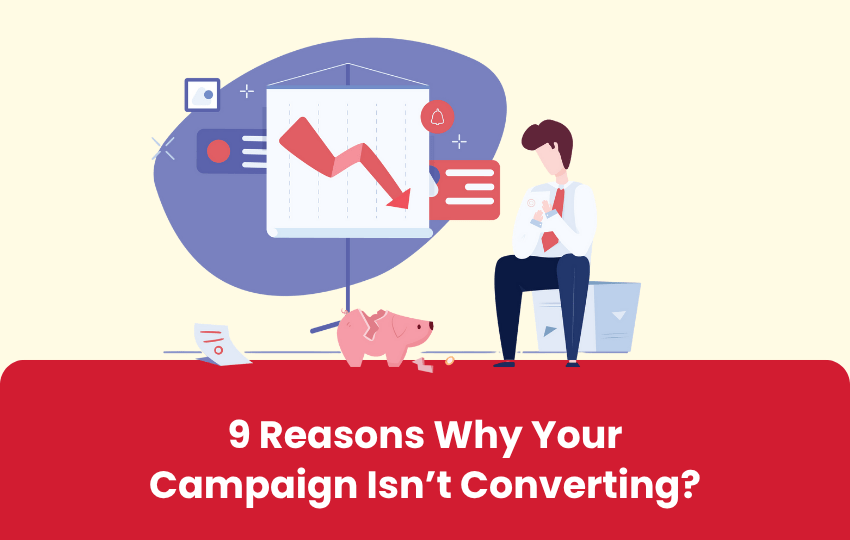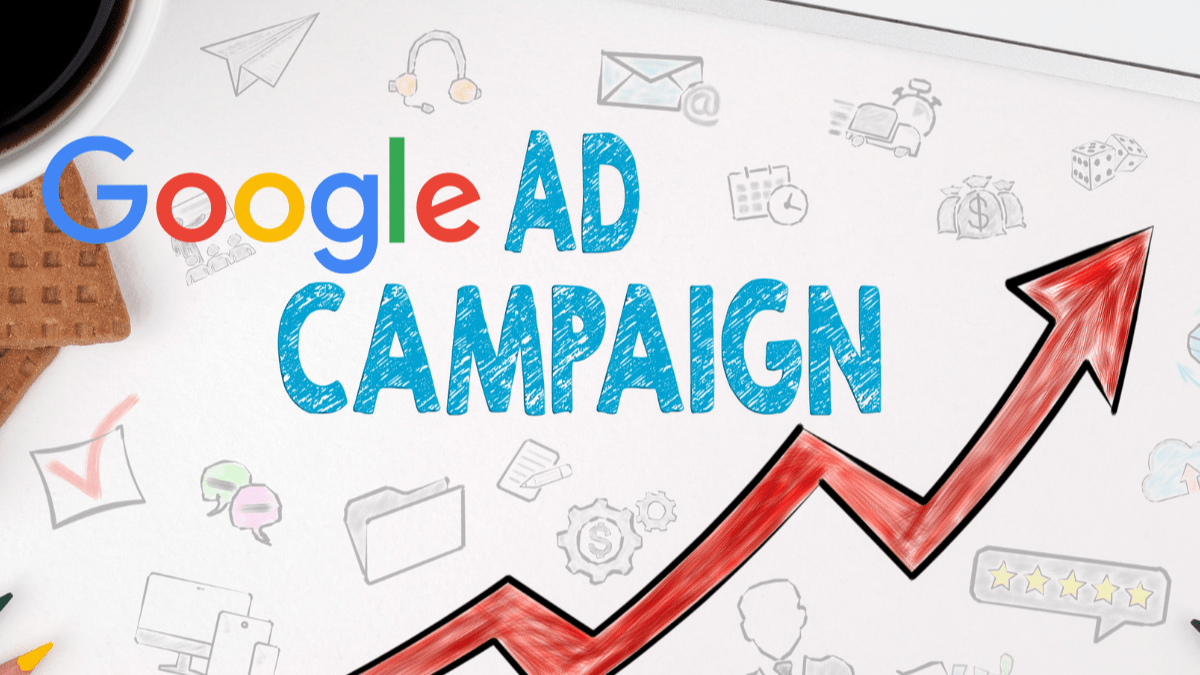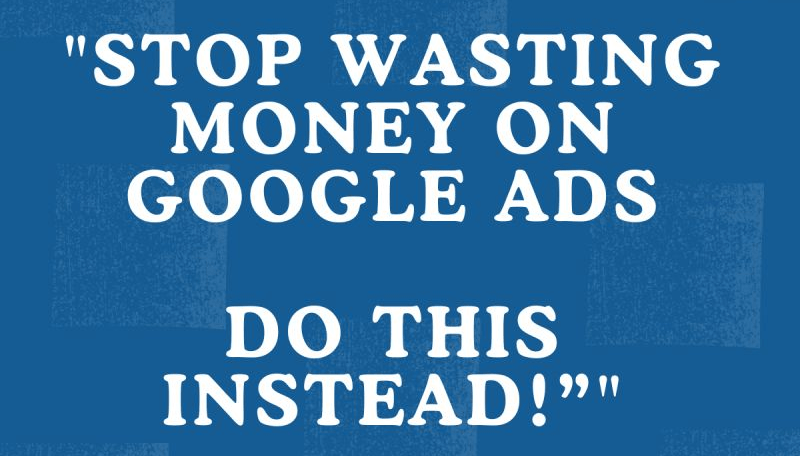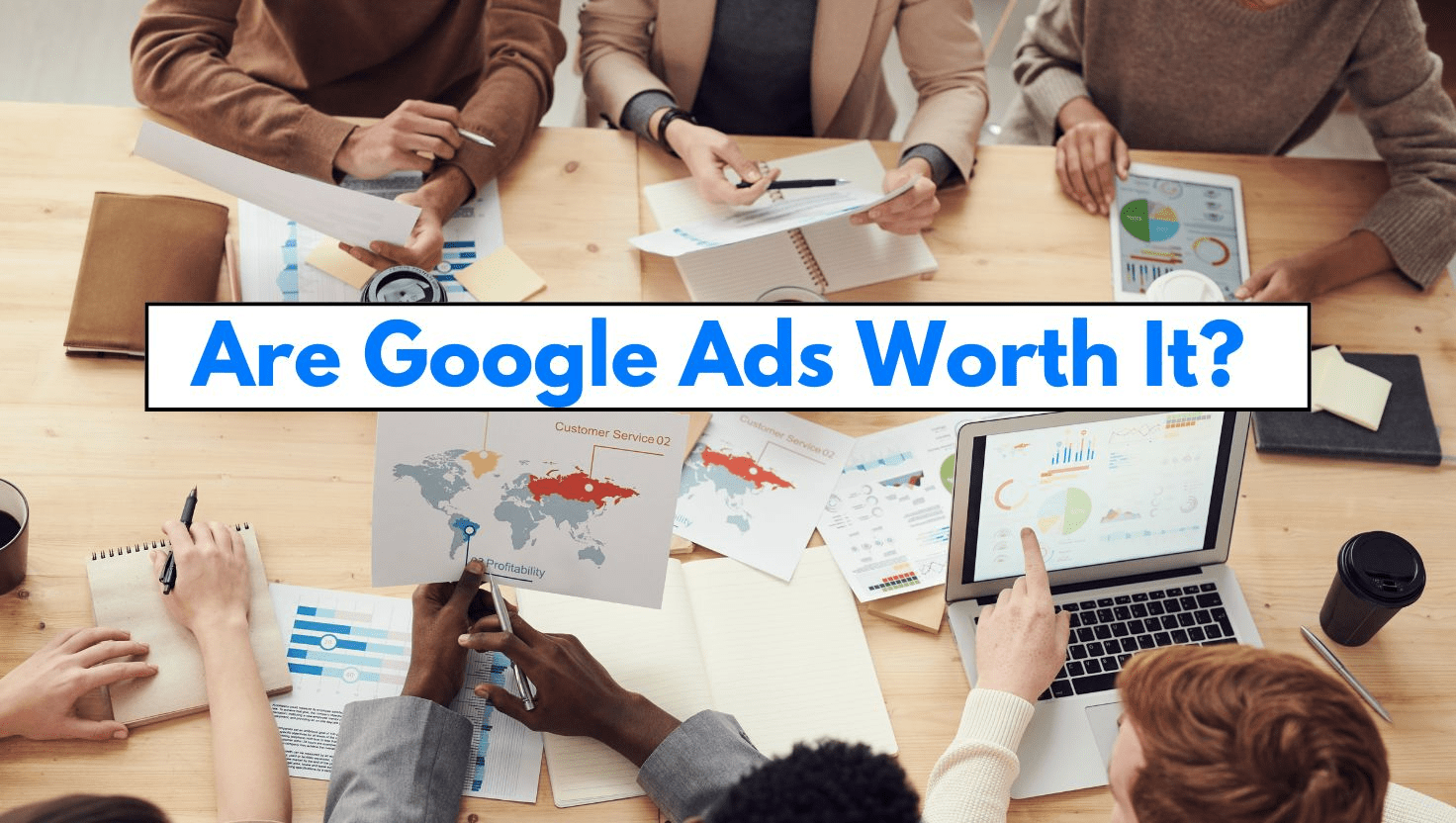
Wasting Money on Google Ads? 9 Reasons Your Campaigns Aren’t Converting
You launched a Google Ads campaign with high hopes, a solid budget, and carefully crafted copy. But after weeks or even months, the conversion numbers just aren’t adding up. It’s not just frustrating—it’s financially draining. And no, it’s not that Google Ads doesn’t work.
The truth is, there are many reasons why your ads might not be converting, and most of them come down to strategy, targeting, and execution. If you’re tired of burning money without results, here’s a detailed breakdown of what might be going wrong—and how you can fix it.

9 Reasons Why Your Campaign Isn’t Converting?
Here are nine reasons why your campaigns are not converting:
1. You’re Targeting the Wrong Audience
If your ads aren’t converting, poor audience targeting might be the reason.
🔹 Wasted Ad Spend
Targeting broad or irrelevant demographics leads to poor conversions. Your budget gets wasted on users uninterested in your product, and you end up paying for clicks that never turn into sales. Precision in targeting is essential to avoid this pitfall.
🔹 Clicks Without Conversions
Misaligned targeting might bring traffic, but not the right kind. If users click but don’t convert, you’re draining your budget with no return. Successful campaigns reach people who are genuinely interested and more likely to take action.
🔹 Know Your Audience
Understanding your customer is crucial. Focus on their age, location, behavior, and intent. The more detailed your targeting, the more effective your campaign becomes. Reaching the right people ensures higher engagement, better ROI, and consistent growth for your brand.
For example, Pepsi’s 2017 Kendall Jenner ad aimed to resonate with socially conscious millennials but missed the mark by trivializing serious social issues. Despite reaching a wide audience, the message felt insincere, sparking backlash instead of engagement. The campaign highlights how poor audience understanding can lead to wasted spend and reputational damage.

2. Your Keywords Are Poorly Aligned With Intent
The wrong keywords attract the wrong audience, leading to wasted clicks and poor results.
🔹 Misleading Search Intent
Chasing high-volume keywords without checking intent can hurt your campaign. For instance, targeting “how to fix a laptop” draws users looking for help, not buyers—resulting in traffic that doesn’t convert and eats up your budget.
🔹 Focus on Transactional Keywords
Prioritize keywords that show buying intent like “buy laptop online” or “best laptop deals.” These terms signal that the user is ready to make a purchase, making your ad spend more effective and driving better-quality leads to your site.
🔹 Align Keywords with Goals
Successful campaigns match keywords with the customer journey. Understand what your audience wants at each stage and target accordingly. This ensures your ads appear when users are most likely to take action, leading to stronger conversions and ROI.
For example, Targeting “how to fix a laptop” may drive traffic but not sales, as users seek help—not to buy. This mismatch drains budget on unqualified clicks. Switching to transactional keywords like “buy laptop online” aligns with purchase intent, improving ad efficiency, attracting ready-to-buy users, and boosting conversions significantly.
3. Weak Landing Pages That Don’t Convert
A great ad means nothing if your landing page fails to seal the deal.
🔹 Poor User Experience
Cluttered layouts, slow loading times, or confusing designs push visitors away. If your landing page doesn’t load fast, match the ad message, or work on mobile, users will bounce—wasting both your traffic and advertising budget instantly.
🔹 Disconnected Messaging
When your ad says one thing and the landing page says another, it breaks trust. Consistency in tone, offer, and visuals helps continue the user journey. The landing page should feel like a seamless extension of the ad’s promise.
🔹 Optimized for Conversion
A high-converting landing page has a bold headline, clear value, minimal distractions, and one focused call to action. It builds trust and guides users smoothly toward the next step—whether that’s a purchase, signup, or inquiry.
For example, Sidekick’s Facebook ads featured athletes using specific tools, but their generic landing page caused over 80% bounce rate. By matching the landing page to the ad’s visuals and message, they boosted add-to-cart rates by 33% and conversions by 8%. Consistency between ad and page dramatically improved results.
4. You’re Not Using Conversion Tracking Properly
Without proper conversion tracking, your ad strategy is just guesswork.
🔹 Blind Campaign Decisions
Not tracking conversions leaves you in the dark. You won’t know which ads, keywords, or audiences are delivering results. Without this insight, you’re wasting budget and missing growth opportunities because there’s no clear picture of what’s actually driving success or failure in your campaigns.
🔹 Incorrect or Missing Setup
Many advertisers skip tracking setup or do it incorrectly. This leads to inaccurate or incomplete data, making it hard to trust performance reports. Whether it’s missing tags or poorly defined goals, these mistakes prevent you—and platforms like Google—from optimizing your campaigns effectively.
🔹 Smarter Optimization with Data
Using tools like Google Ads Conversion Tracking or GA4 lets you monitor key actions—form fills, purchases, calls, or sign-ups. With proper tracking, you gain the power to refine strategy, boost ROI, and focus only on what actually converts, instead of relying on assumptions.
For example, Penketh Group lacked proper conversion tracking on Google Ads, causing wasted spend and poor results. After implementing accurate tracking and optimizing campaigns, they achieved a 347% increase in conversions and 73% lower cost per acquisition. Proper tracking turned guesswork into data-driven success.

5. Your Ads Aren’t Engaging or Relevant
Weak ad copy can ruin even the most well-targeted campaigns.
🔹 Bland Messaging Gets Ignored
Even with perfect targeting, dull or generic ad copy fails to capture attention. If your ads don’t address user pain points or stand out with a clear benefit, they’ll be scrolled past—wasting impressions, clicks, and budget without driving meaningful engagement or conversions.
🔹 Make It Persuasive
Effective ads focus on benefits, not just features. Add urgency, use strong calls to action, and include social proof to build credibility. This approach motivates users to click and act, increasing your chances of converting interest into action in a competitive ad space.
🔹 Ensure Message Match
Your ad and landing page should tell the same story. If your ad promises one thing but the page delivers another, users will bounce. Aligning copy ensures trust, consistency, and a smoother user experience, which is crucial for maximizing conversions.
Example, Airbnb’s “Live There” campaign used Facebook video ads highlighting authentic local experiences and real people. This emotional storytelling boosted engagement and brand awareness by connecting with users’ desire for meaningful travel—proving that relevant, engaging ad content drives stronger results than generic messaging.
6. You’re Not Using Retargeting
Most visitors won’t convert on their first visit—retargeting brings them back.
🔹 Stay Top-of Mind
Retargeting shows ads to users who’ve already visited your site, helping you stay visible. These warm leads are familiar with your brand, making them more likely to convert. It’s a powerful way to build trust and guide them further down the buying journey.
🔹 Recover Lost Opportunities
Without retargeting, interested users may forget you entirely. Many potential customers leave before buying—especially cart abandoners. Retargeting helps recapture their attention with reminders, incentives, or urgency, giving you a second chance to convert prospects who were already halfway there.
🔹 Tailor Your Message
Customize retargeting ads to match user behavior. Show testimonials for credibility, discounts to entice hesitant buyers, or product reminders to reinforce interest. Personalized retargeting creates a stronger connection and increases the chances of turning visitors into paying customers.
7. No Funnel Strategy in Place
A solid marketing funnel guides prospects from first awareness to final purchase. Without it, users aren’t ready to convert after just one ad click.
🔹 Instant Conversion Is Unrealistic
Expecting users to convert immediately after a single ad click is unrealistic, especially for high-ticket or complex products. Customers need time to become familiar with your brand, understand your offer, and build trust before they are ready to make a purchase.
🔹 Guide Users Through Stages
A well-structured marketing funnel guides users from awareness through consideration to conversion. Including blog content, lead magnets, email sequences, and remarketing ads helps nurture prospects gradually, increasing the likelihood they will choose your product when ready to buy.
🔹 Build Trust Gradually
Users need multiple touchpoints to build trust and feel confident about your product. A marketing funnel provides a seamless journey where prospects learn more about your brand’s value and benefits, ultimately leading to higher engagement and increased conversions.
Example, HubSpot uses a detailed marketing funnel guiding prospects from awareness (blog posts, SEO) to consideration (ebooks, webinars) and finally to conversion (free trials, demos). This gradual nurturing builds trust and educates prospects, resulting in higher-quality leads and stronger conversion rates.
Why Choose Cybez
At Cybez, we don’t just run Google Ads—we craft conversion-focused strategies tailored to your brand’s goals. Our team dives deep into your audience behavior, builds high-performing funnels, and optimizes every touchpoint to reduce wasted ad spend. From precision targeting and keyword research to landing page design and ROI tracking, we handle everything with performance in mind.
We believe in transparency, data-driven execution, and results you can actually measure. Stop wasting money—partner with Cybez now!
FAQs
- Is funnel strategy important for campaign conversion?
Yes, a well-defined funnel strategy is crucial for campaign conversion. Most users don’t convert on their first interaction. A funnel guides them through different stages, from awareness to consideration to decision, building trust and familiarity with your brand and offer, thereby increasing the likelihood of conversion.
- How frequently should I optimize my Google Ads campaigns?
Google Ads campaigns should ideally be optimized at least weekly, if not more frequently, depending on your budget and campaign volume. The digital landscape is constantly changing, and regular optimization allows you to adapt to new trends, competitor activities, and algorithm updates, ensuring your campaign remains efficient and effective.

